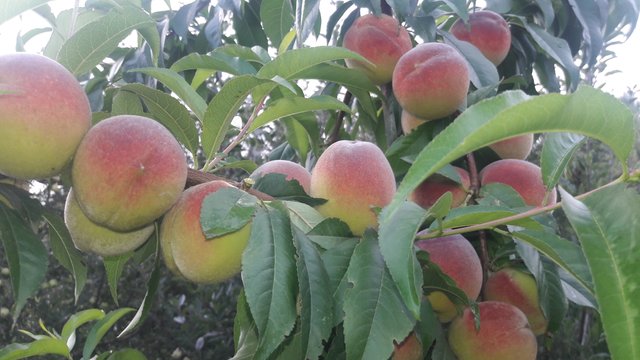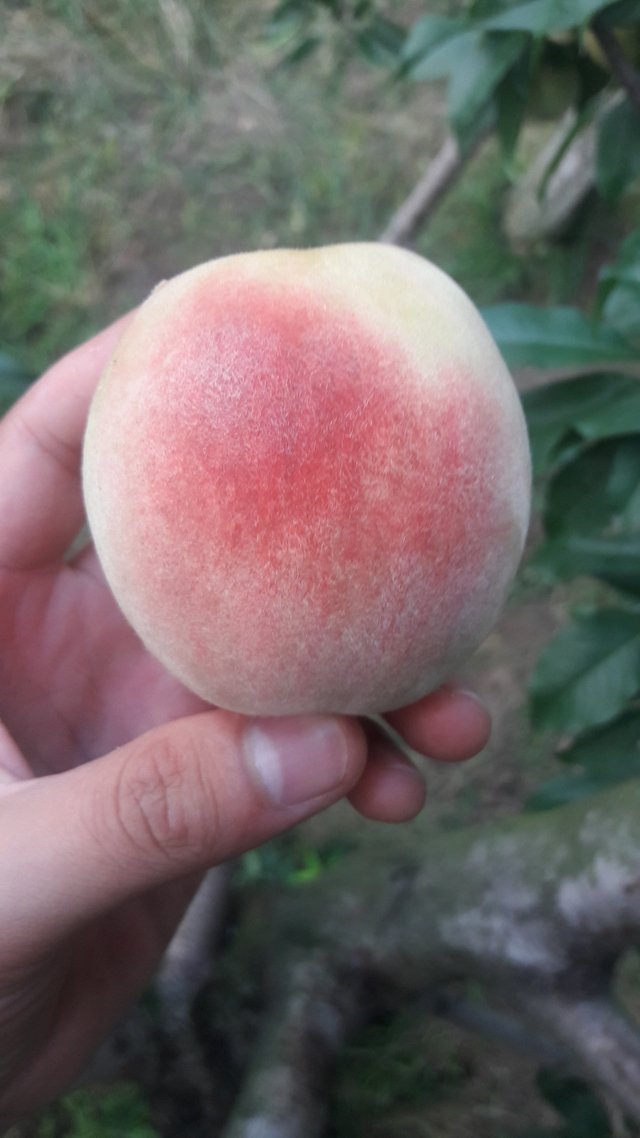Peach...!!!(information and benefits)

The peach is a deciduous tree native to the region of Northwest China between the Tarim Basin and the north slopes of the Kunlun Mountains, where it was first domesticated and cultivated. It bears an edible juicy fruit called a peach or a nectarine. Wikipedia
Scientific name: Prunus persica
Higher classification: Prunus
Order: Rosales
Rank: Species
Did you know: China is the largest world producer of peaches, with Italy second.They are cultivated in kashmir valley as well as a medium scale fruit.And now-a-days they are very much ripened in order to get packed.
NUTRITION FACTS
Peaches
Amount Per 100 grams
Calories 39
% Daily Value
Total Fat 0.3 g 0%
Saturated fat 0 g 0%
Polyunsaturated fat 0.1 g
Monounsaturated fat 0.1 g
Cholesterol 0 mg 0%
Sodium 0 mg 0%
Potassium 190 mg 5%
Total Carbohydrate 10 g 3%
Dietary fiber 1.5 g 6%
Sugar 8 g
Protein 0.9 g 1%
Vitamin A 6% Vitamin C 11%
Calcium 0% Iron 1%
Vitamin D 0% Vitamin B-6 0%
Vitamin B-12 0% Magnesium 2%
VARITIES:
Hundreds of peach and nectarine cultivars are known. These are classified into two categories — the freestones and the clingstones, depending on whether the flesh sticks to the stone or not. Freestones are those whose flesh separates readily from the pit. Clingstones are those whose flesh clings tightly to the pit. Some cultivars are partially freestone and clingstone, so are called semifree. Freestone types are preferred for eating fresh, while clingstone types are for canning. The fruit flesh may be creamy white to deep yellow; the hue and shade of the color depends on the cultivar.
Peaches with white flesh typically are very sweet with little acidity, while yellow-fleshed peaches typically have an acidic tang coupled with sweetness, though this also varies greatly. Both colors often have some red on their skin. Low-acid white-fleshed peaches are the most popular kinds in China, Japan, and neighbouring Asian countries, while Europeans and North Americans have historically favoured the acidic, yellow-fleshed cultivars.
Peach breeding has favored cultivars with more firmness, more red color, and shorter fuzz on the fruit surface. These characteristics ease shipping and supermarket sales by improving eye appeal. However, this selection process has not necessarily led to increased flavor. Peaches have a short shelf life, so commercial growers typically plant a mix of different cultivars to have fruit to ship all season long.

MEDICINAL USES:
As an excellent source of the strong antioxidant vitamin C, peaches can also help combat the formation of free radicals known to cause cancer. While an adequate vitamin C intake is necessary and very beneficial as an antioxidant, the amount necessary to consume for treatment purposes for cancer is thought to be beyond oral intake.
High fiber intakes from all fruits and vegetables are associated with a lowered risk of colorectal cancer.
The antioxidant vitamin C, when eaten in its natural form (in whole foods such as peaches) or applied topically, can reduce wrinkles, improve overall skin texture and help to fight skin damage caused by the sun and pollution. Vitamin C also plays a vital role in the formation of collagen, the support system of your skin.
Another study from Texas A&M showed that peaches and plum extracts were effective in killing even the most aggressive types of breast cancer cells and did not harm normal healthy cells in the process.
Studies have shown that type 1 diabetics who consume high-fiber diets have lower blood glucose levels and type 2 diabetics may have improved blood sugar, lipids, and insulin levels. One medium peach provides about 2 grams of fiber.
#Heart health
The fiber, potassium, vitamin C, and choline content in peaches all support heart health. An increase in potassium intake along with a decrease in sodium intake is the most important dietary change that a person can make to reduce their risk of cardiovascular disease, according to Dr. Mark Houston, an associate clinical professor of medicine at Vanderbilt Medical School and director of the Hypertension Institute at St. Thomas Hospital in Tennessee.3
In one study, those who consumed 4069 mg of potassium per day had a 49% lower risk of death from ischemic heart disease compared with those who consumed less potassium (about 1000 mg per day).
#Eye health
A higher intake of fruits (3 or more servings per day) has been shown to decrease the risk and progression of age-related macular degeneration.
It is important to note that the benefits of consuming fruits and vegetables of all kinds, including peaches, are infinite. As plant food consumption goes up, the risk of all lifestyle related diseases (such as obesity, diabetes, and heart disease) goes down. High fruit and vegetable intake is also associated with healthy complexion and hair, increased energy, lower weight, and lower risk of mortality.
Well, well, a real good treasure of health information. Thank you.